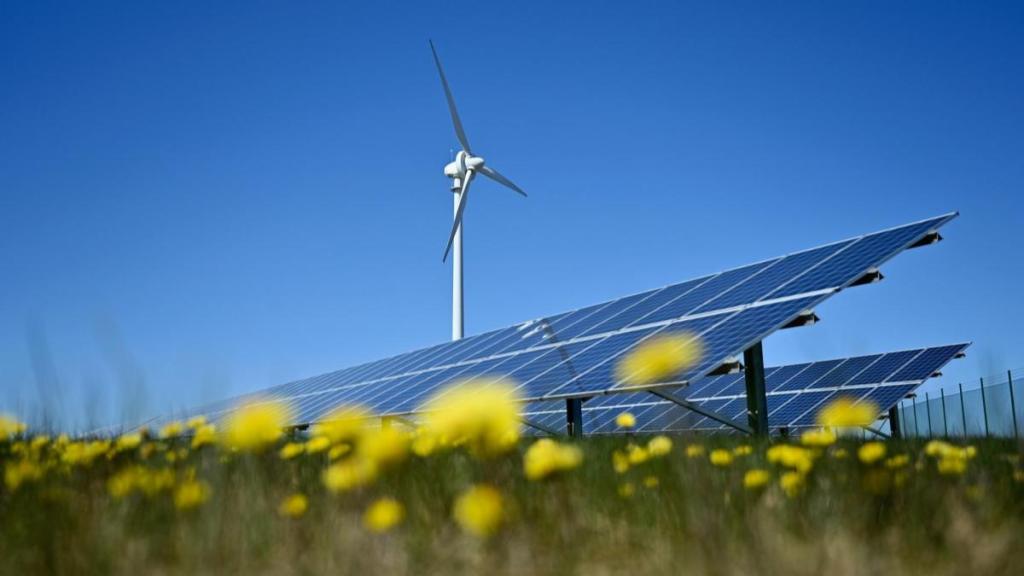By Ajay Mathur,
Solar energy is the best way for the world to meet its current and future energy needs, and understandably assumes great importance in the energy pathways of most countries. However, it isn’t enough to merely ramp up renewable energy (RE) generation; it must be complemented by the implementation of energy storage systems and energy efficiency measures. It is a jigsaw that needs to be pieced together through the collective efforts of all nations.
India has done extremely well in building up its solar energy capacity over the past decade. The installed solar power capacity is more than 87 gigawatt (Gw), almost 58% of the total installed RE capacity. However, energy storage hasn’t kept pace with RE development, and this poses challenges with respect to grid flexibility and stability. Energy efficiency has been picking up, but largely through government-led programmes implemented by and for civic infrastructure; adoption by the private sector has lagged in comparison. India’s inbound investments in RE, meanwhile, continue to be a small percentage of the global total.
The Union Budget in July placed strong emphasis on strengthening the growth of India’s RE ecosystem. It announced a rooftop solar scheme, a policy for promoting pumped storage projects, and measures aimed at incentivising domestic manufacture of solar panels, cells, and other components. The Budget also announced financial support to micro, small, and medium enterprises for shifting to clean energy and implementing energy efficiency measures.
This momentum must be enhanced further in the years ahead. There is a long way to go in meeting the stated target of 500 Gw of RE by 2030. Widespread deployment and adoption of solar energy has many prerequisites and entails certain challenges that India — and all other nations working towards a clean energy transition — must address with urgency.
Intermittency of solar power and energy storage
Solar power generation, by the very nature of its source, is intermittent, and this can adversely impact the stability of the power grid. It is necessary to manage this intermittency and minimise voltage and frequency fluctuations to safely integrate solar energy into the grid with other sources, necessitating energy storage systems. Solar energy, combined with battery storage, can be a very viable choice for electrification, especially in places that are far away from the grid. The National Electricity Plan 2023 of the Central Electricity Authority projects India’s energy storage capacity requirement to grow exponentially to 82.37 Gw hours by 2026-27 and a further fivefold by 2031-32. There is a need to strengthen R&D and increase investments in energy storage technologies to drive down costs further.
Complementing energy generation with storage
To limit global temperature rise, it is essential to treble renewable power generation capacity and double the current levels of energy efficiency by 2030. The good thing about energy efficiency is that it can be adopted across industries and verticals.
In the building sector, it can be achieved through deep retrofitting, advanced insulation, high-efficiency windows, smart energy management systems, and near-zero energy standards for new constructions. In the industrial sector, energy efficiency can be enhanced with high-efficiency boilers, artificial intelligence-driven analytics, smart sensors for real-time monitoring, and state-of-the-art processes. The transportation sector can look to electric vehicles, extensive charging infrastructure, stringent fuel efficiency standards, and enhanced public transport systems. The power sector, meanwhile, can optimise electricity distribution and reduce losses via greater smart grid deployment.
A combination of RE and energy efficiency can potentially reduce global energy demand by up to 25% by 2030. Furthermore, it can create millions of jobs — a big plus point for a country like India that is trying to maintain a balance between its development goals and environmental commitments.
Policy interventions
Policy has a huge influence on how any industry grows and develops. On the energy efficiency front, the solar industry will benefit from the implementation of strict energy performance standards for solar infrastructure, vehicles, and appliances. Germany’s Energiewende policy, which promotes the integration of RE and energy efficiency, has led to significant reductions in the country’s greenhouse gas emissions.
There must be financial incentives — such as tax credits, subsidies, and grants — for those who develop energy-efficient technologies as well as for those who adopt them. Adoption can also be accelerated by public awareness campaigns that educate people and businesses about the best practices and benefits of energy efficiency.
On the financial front, it is estimated that annual clean energy investments must increase to $4.5 trillion by 2030, with a majority of it being used to increase RE capacity and improve energy efficiency, and with a comparatively smaller share allocated for energy storage technologies and industrial equipment upgrades. Today, emerging economies receive only a fraction of the resources needed to meet their energy requirements sustainably. Policies that encourage collaborations with international financial organisations, development institutions, and national governments can help in attracting the necessary investments and financial support.
International collaboration
Most of the technologies that we need for the solar revolution already exist; what we need is greater international cooperation, knowledge-sharing, and innovative approaches to widen their reach and maximise their impact. RE, energy efficiency, and storage technologies will complement and strengthen each other, but not all nations have the knowledge or the resources to bring the trio together on their own; it is the collective responsibility of the world to make it happen.
We need concerted efforts from governments, businesses, and international organisations to conceptualise, develop, and build a global solar ecosystem that is supported and enhanced by robust policies, finances, and technology-based solutions. India is one of the world’s largest economies, and a leading voice of the Global South. The onus is on all — businesses, investors, research institutions, and governments — to turn ambition into action and walk the talk of a sustainable pathway to development.
The author is Director general, International Solar Alliance.
Disclaimer: Views expressed are personal and do not reflect the official position or policy of Financial Express Online. Reproducing this content without permission is prohibited.


